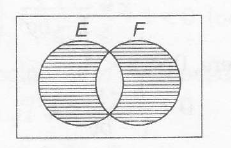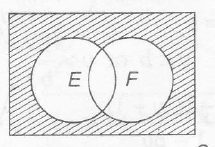Answer:
Option A,D
Explanation:

P(E∪F)−P(E∩F)=1125.....(i)
(i.e, only E or only F)

Neither of them occurs =225
⇒ P(¯E∩¯F)=225......(ii)
From . Eq.(i), we get
P(E)+P(F)−2P(E∩F)=1125 ...(iiI)
From . Eq.(ii), we get
(1−P(E))(1−P(F))=225
⇒ 1−P(E)−P(F)+P(E).P(F)=225.....(iv)
From eqs.(iii) and (iv) , we get
P(E)+P(F)=75 P(E).P(F)=1225
∴ P(E) .\left\{ \frac{7}{5}-P(E)\right\}=\frac{12}{25}
\Rightarrow (P(E))^{2}-\frac{7}{5} P(E)+\frac{12}{25}=0
\Rightarrow \left(P(E)-\frac{3}{5}\right)\left(P(E)-\frac{4}{5}\right)=0
\therefore P(E)= \frac{3}{4} or \frac{4}{5} \Rightarrow P(F)= \frac{4}{5} or \frac{3}{5}